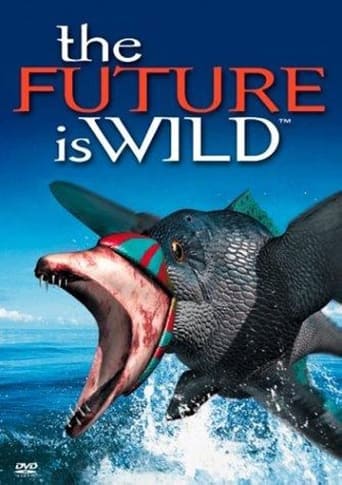doktorf
The process of evolution is well enough understood at this point to speculate about future directions and not seem totally ridiculous.In his book, "AFTER MAN", Dougal Dixon attempts to model a possible world some 50 million years hence and does so reasonably convincingly. He also worked on the series "The Future is Wild" some twenty something years later and the scope is much more ambitious. I would have given it more time and attempted to show greater depth than the makers of the series did. Much of it seemed glossed over and the rational for many of the various creatures was sketched out a little too loosely. If anything I would have liked to see it projected still farther into the future as changes in the sun cause the Earth to become very different.While I don't think comparisons with Walking with Dinosaurs are totally fair, the difference in production values between the two is evident, but so far as depicting the habits of animals that have never been seen alive, their intent is pretty much the same. The future shown here is plausible.This series is better viewed on DVD than broadcast because a lot of little points go by quite quickly and many of the comments from scientists are somewhat subtle and deserve closer scrutiny. One will realize that many of them are in disagreement with several of the models presented in the series.
Torgo_Approves
(r#89)This is not a very bad show and it is very interesting to see how these scientists and CGI artists have imagined what the world may look like millions of years from now. But when you compare this to its utterly brilliant predecessor "Walking With Dinosaurs", it becomes obvious that for what it is, "Wild" is a flawed series.The biggest flaw is that it's repetitive. I love to marvel at the awesome creatures the imaginative minds behind the show have thought up. But when some geeky guy with a ridiculous beard spends several minutes explaining the anatomy of the animal, and when the same scenes are shown repeatedly to demonstrate what the animal is capable of ... it becomes boring.Still this is a rather good show and it features some very cool creatures, such as the lizard that walked upright and caught flies in its neckshields (is that a word??) and the (literally) flying fish. As long as a gigantic CGI monsters roam across the screen instead of some dude with an obviously fake beard, this is fun to watch if not necessarily wild.
kainhorward
If you have ever read any of Dugal Dixon's "speculative zoology" books, you'll love this show(and if you haven't, you should). The series has the same basic theme as his book After Man; what will animals be like far in the future? The series looks at three time periods, each in which life is given a different challenge. 5 million years from now, and the Earth is in the grip of a new ice age. 100 million years from now, and it's the opposite, the whole world is very hot and wet. My favorite part is 200 million years from now, in which a mass extinction has wiped out all familiar forms of life. I don't want to give away too much about the creatures that inhabit these future worlds. Go see it for yourself, because If this show is in any way correct in its speculation, the future is truly going to be wild!
msillers
This is an educational series telling the history of life on earth as it might be based on what scientists know of past history.Told like one of the better nature programs with a view to speculating on the future. The creatures are imaginative and well explained. Each of them is presented as a potential descendant of today's species and how they came about. Biology, geography and environmental conditions are scientifically evolved by extending what we know of the past into the distant future. And this is all set to life with the use of some of the most incredible computer generated animations yet All of this makes the presentation lifelike and believable.

